Exploring the Ancient Mesopotamian Civilizations: Sumer, Akkad, and Babylon
The Mesopotamian civilizations of Sumer, Akkad, and Babylon were some of the earliest and most influential societies in human history. From their impressive architectural feats to their advancements in writing and law, these civilizations left a lasting legacy that still impacts our world today. Join us on a journey through their fascinating history, religion , culture, writing , and achievements.
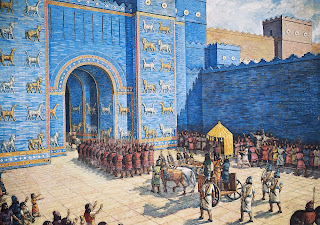 |
| Mesopotamian Civilizations |
Introduction to Mesopotamia and its significance.
Mesopotamia, meaning "land between rivers," is the region located between the Tigris and Euphrates rivers in modern-day Iraq. It is considered the birthplace of civilization, as it was home to some of the earliest and most influential societies in human history. The Mesopotamian civilizations of Sumer, Akkad, and Babylon were known for their impressive achievements in architecture, writing, law, and more. Their legacy continues to impact our world today, making it important to understand and appreciate their history and culture.
“History of Ancient Civilizations”. In this article we will be discussing about the Mesopotamian Civilization. Home to the earliest civilization, the Mesopotamian civilization has been the land where the first cities of the world were developed and early empires flourished. The people of Mesopotamia were among the first to record events on clay tablets. During the Hellenistic period, the Seleucids used the term Mesopotamia to indicate a wide geographical area.
Timeline of ancient Mesopotamian civilizations
•5000-3500 BCE: The first city-states gradually develop in southern Mesopotamia. This is the achievement of the Sumerian people.
•BCE. 3500: Writing begins to be developed. At first this is based on pictograms, and takes about a thousand years to evolve into a full cuneiform script.
•BCE. 2300: King Sargon of Akkad starts conquering the first empire in world history. The empire reaches its height in c. 2220.
•BCE 1792-49: King Hammurabi of Babylon conquers a large empire. Hammurabi is famous for the law code which he issues. His empire begins to decline immediately after his death.
Mesopotamia river valley civilizations
Being a riverine civilization, the area between the Euphrates and Tigris rivers forms the cradle of this civilization. Geographically, the valley was situated in between Syrian and Arabian Desert on one side and the other boundary was formed by the Zagros Mountains. The Valley was productive as the soil was alluvial and fertile. Due to its productivity and fertility, it was known as “Garden of Eden” or “The Fertile Crescent”.
Unlike the early Egyptian civilization, which remained isolated for a long time, the history of Mesopotamia is a story of struggle from its earliest history. The river, Tigris Euphrates witnessed the influx of various nomadic tribes. The Zagros mountains were home to tough raids by these tribes and hence there were constant invasions. The civilization is known to have witnessed the rise of ancient states and cities like Uruk, Nippur, Nineveh and such others with complex social structures.
The Mesopotamian civilization consisted of three main civilizations the Sumerian civilization, the Babylonian civilization and Assyrian civilization. A few important historical rulers of Mesopotamia were as follows- Ur-Nammu (the king of Ur), Sargon (founder of Akkadian kingdom), Hammurabi (founder of the Old Babylonian state), Tiglath-Pileser I (founder of the Assyrian Empire) and Tigranes the Great, who established the Armenian Empire.
It is believed that the ancient Mesopotamian civilization developed in about 4th millennium B.C. till the rise of the Achaemenids in the 6th century BC. The period can be divided into the following-
Timeline of Mesopotamian empires
- Hassuna, Samarra and Halaf cultures (Late Neoloithic period)
- Ubaid Period (ca 5900-4000BC)
- Uruk Period (4000-3100 BC)
- Jemdet Nasr Period (3100-2900 BC)
- Early Dynastic city states (2900-2350 BC)
- Akkadian Empire (ca 2350-2193 BC)
- Neo-Sumerian Period (ca 2119-2204 BC)
- Early Assyrian kingdom (20th to 18th century)
- First Babylonian dynasty (18th to 17th century)
- Kassite Dynasty, Middle Assyrian period (16th to 12th century)
- Dark Age (12th to 10th century)
- Neo Assyrian Empire ((10th to 7th century)
- Neo-Babylonian Empire (7th to 6th century)
The Akkadian Empire and its impact on Mesopotamia.
The Akkadian Empire was founded by Sargon of Akkad in the 24th century BCE and was the first empire in world history. It was known for its military conquests and innovations in administration, including the use of a standardized system of weights and measures. The Akkadian language also became the lingua franca of the region, influencing the development of other languages in Mesopotamia. Despite its relatively short lifespan, the Akkadian Empire had a significant impact on the region and laid the foundation for future empires to come.
 |
| Sumerian empire |
The rise Sumer: achievements, culture, and legacy.
The Sumerian civilization was a remarkable achievement in human history, with many advancements that still influence modern society. Their culture was rich and diverse, with a complex religion, art, and literature. However, the civilization eventually declined due to a combination of factors such as environmental changes, invasions, and internal conflicts. Despite its decline, the legacy of the Sumerian civilization can still be seen in modern society, particularly in the fields of mathematics, astronomy, and literature.
The Sumerians and Mesopotamia
The Sumerians were the earliest settlers in the Valley as referred to in several accounts. In fact, it is very difficult to say as to how and when these settlements started. The Summerians were neither Mediterranean nor Alpine in their physical features. They had an oval face, high straight nose and their stature was stocky. From the available materials, it can be said that small states developed and flourished in this civilization. The small states were ruled by several political dynasties of which a few are mentioned below.
From the excavations, it is found that the Uruk dynasty, which ruled in Northern region from 2800 B.C. to 2360 B.C., was the first kingdom of Sumer.
The Uruk dynasty was replaced by Ur dynasty and it is known that the Urs had a well established government. Some tombs belonging to the kings of the Ur dynasty have been discovered. The tombs, made of bricks and stones, also contained the personal belongings of the dead person.
The Lagash dynasty succeeded the Uruk dynasty. Ur-Nanshe was the founder of Lagash dynasty and constructed many temples and canals. Eantum, of the Lagash dynasty, conquered the cities of Umma, Kish and Mavi.
Ur Kazina, the last ruler of Lagash dynasty was defeated by Lugdzagesi, the governor of Umma, who founded the Lugalzeshi dynasty. His kingdom covered the whole of Sumerian from the lower sea i.e. the Gulf of Persia to the upper sea i.e. Mediterranean sea.
The conquest of Akkad led to the spread of the Sumerian culture. Even though the Akkadians were Semitic, they accepted the Sumerian culture. Although the Sumerian culture was rich, their lack of unity proved to be a fatal weakness. The Akkadians developed a great kingdom which fell into the hands of the Barbarians but was later restored by the Ur rulers. Later in 2200 BC, the Babylonians took over the whole territory and built a new capital city and called it Babylon, and this marked the beginning of the Babylonian period.
Sumerian Cities and Cultural Life
The cities were ruled by kings, assisted by the nobles and priests. In Sumerian times, the kings were mere figureheads. The Kings and Queens were believed to be descendants of God and not God in person, as the Egyptians. The most common name for the kings were “shepherd” referring to the role of the king as the guardian of the general people.
The Sumerians had an orderly society. The king or “patesti” (in Sumerian tongue) was considered the tenant farmer of the god, whose lease was renewed every year during a festival held annually. The king had several duties which included collecting offerings, supervising farming and workshops, legalizing all business transaction and defending the city. Warfare was common because of rivalry for land and water. Many a time the change of the course of the river led to hostilities and even the repeated invasions from the neighbouring nomadic tribes necessitated the need for military alertness.
Solar and Lunar eclipse were observed and their occurrence was noted according to the year, month and day. Texts containing botanical and chemical terms that are still used by scientists in these fields have been found, dating from the 2nd millennium BC.
Sumerian invention of writing
Sumerian was the earliest written language and according to scholars, besides Sumerian there were other spoken languages in early Mesopotamia. The Sumerians wrote on clay tablets with a reed, making some symbols or lines- a system that is referred to as cuneiform. The Summerians did not learn paper making, but they continued to record their history on clay. They rolled out a lump of soft clay, made their wedge-shaped marks on it, and then allowed the tablet to dry until it was hard. It served the purpose of counting of sheep for the sake of taxation to religious practice, myths and legends.
The latin word for ‘wedge’ is cuneus and forma meaning “shape”, hence the name cuneiform (Kyoo-Nee-uh-form) writing. There were about 600 cuneiform signs.
Sumerians took their idea of writing from cylinder seals and used symbols which were later employed to identify religious and economic terminologies. Designs or signs, each representing people, animals, plants, temples, gods, and cities and finally graphs were associated with specific words and component syllables. Centuries after the high point of Sumerian culture, a ruler of Persia named Darius the Great suppressed a rebellion led by nine chiefs. He ordered the story to be carved in both pictures and writing on a limestone cliff which is now placed in western Iran. The writing is in tree languages, all written in cuneiform.
The Sumerians also devised a moon calendar with 12 divisions adding a year whenever necessary to bring the year in harmony with the seasons. Each year was named after some significant event like a storm, death of someone important etc.
Advances in Science and Math
The Mesopotamians’ creativity also extended to technology. You read earlier about Sumerian irrigation systems. Sumerians also invented the wagon wheel to help carry people and goods from place to place. Another break- through was the plow, which made farming easier. Still another invention was the sailboat, which replaced muscle power with wind power. Sumerians developed many mathematical ideas. They used geometry to measure fields and put up buildings. They also created a number system based on 60. We have them to thank for our 60-minute hour, 60-second minute, and 360-degree circle.
In addition, Sumerian people watched the skies to learn the best times to plant crops and to hold religious festivals. They recorded the positions of the planets and stars and developed a 12-month calendar based on the cycles of the moon.
The Babylonian Empire and its achievements.
The Babylonian Empire was founded by King Hammurabi in the 18th century BCE and is known for its impressive achievements in law, astronomy, and architecture. The Babylonians were also skilled astronomers, developing a calendar based on the phases of the moon and making important observations of the stars. In terms of architecture, the Babylonians built impressive structures such as the Hanging Gardens of Babylon, one of the Seven Wonders of the Ancient World. Despite its eventual decline, the Babylonian Empire left a lasting legacy in the region and beyond.
Babylon the ancient city
The Babylonian people followed the Semitic culture and they gained control of Mesopotamia after their supremacy over the Akkadians. The term Babylonian includes the mixed culture of Semites, Sumerians and other diverse elements. When one of their chief, Summu-Abbu, became the ruler of a town Bab-Ilu, this small town later became the centre of power and was named as Babylon. Summu–Abu is said to have founded the first kingdom of Babylon.
Hammurabi, the fourth descendent of Summmu-Abbu was a popular and powerful ruler. He conquered Isin, Eshnunna, Mari city states and extended his empire to the Mediterranean Sea. He played a major role in uniting the greater Mesopotamia and established a centralized government. He governed with an iron hand, his authority being based upon divine origin and thus he enjoyed absolute power. He worked for the welfare of his subjects and during his rule several canals were built to provide irrigation facilities to his subjects. His period was rightfully a glorious period in the Babylonian history.
The descendents of Hammurabi had to defend their empire from the invasions of the Kessites, but it was not for a long time. The Kassites conquered Babylon and established a new dynasty in about 1700 BC.
During the rule of the Kassites, anarchy prevailed everywhere resulting in the degradation of culture and civilization. During the time of Hammurabi, a small state like Babylon became a major city and later it was called Babylonia meaning “the gateway of the gods”. However, Babylonia regained its lost glory and honour under the rule of the able king.
What is the law code of Hammurabi ?
Hammurabi (1792–1750 b.c.e.) ruled the great Babylonian Empire that stretched from the Persian Gulf to the Mediterranean Sea. Building on older Mesopotamian laws, he compiled one of the great ancient codes, the most complete collection of Babylonian laws. His legal decisions were inscribed in the Semitic Akkadian language in cuneiform script placed in Babylon’s temple of Marduk. It contains 282 case laws dealing with economics (prices, tariffs, trade, and commerce), family law (marriage and divorce), criminal law (assault, theft), and civil law (slavery, debt). The stone was discovered in the ancient Persian capital of Susa in 1901 and can now be found in the Louvre in Paris.
Babylonian law code of Hammurabi
However, Hammurabi is best known by his code of laws. Hammurabi’s laws controlled all the aspects of Babylonian life. Some laws were related to commerce and industry, and included provisions regarding wages, powers and conditions of work. There were laws which dealt with property rights, bankruptcy while others dealt with marriage and divorce. The judges were bound to enforce the laws and under the strict supervision of the king’s advisers and officials.
In Hammurabi’s code, adultery in legal terms was limited to the infidelities of the wife. There were severe penalties for any attempt to bribe a judge or a witness. Carved upon a diorite stone shaft about 8 feet high, the code of Hammurabi has been preserved. He tried to make his subjects believe that the laws were divine and given by the Sun God. Although his laws offered justice - the idea of punishment was ruthless, basically –‘an eye for an eye’.
The Babylonians believed that the king was an agent of Marduk and any ruler who was legitimate should be crowned. The Babylonians had a centralized government where the king held all power. The king exerted all control and the fate of the state and that of the common people was decided by him. His power was based on the concept of divine origin and hence it was absolute.
Literature of the Babylonians
That learning was prized among the Babylonians is known from the popular proverbs like, “Ye who excel in tablet writing shall shine like the sun”. They adopted the Sumerian cuneiform writing, and developed it further.
The towns and temples housed libraries. Men and women alike learned to read and write. Most of the Babylonian literature was translated from the original Sumerian texts and the language continued to remain Sumerian. Mythology and epics appeared to be popular and the most popular epic was that of the Great Epic of Gilgamesh. He was a legendary ruler and the epic portrays the challenges faced by mankind through their life and after death. The epic contains many Babylonian myths. Through the epics, attempts were made to explore the relation of man with the universe and their very existence in this world.
Another form of Babylonian literature consisted of Temple Literatures, which included psalms, hymns and prayers. Fables were written in great numbers and were termed as “Wisdom Literature” because every story had a moral within it. Epigrams were equally popular for its words of wisdom and philosophy. The study of the sciences like astronomy and astrology held a special place in the society of the Babylonians. Reports from the Observatories were sent to the king. The Babylonians developed the lunar calendar and were able to predict the movement of the planets.
Mesopotamia the old Assyrian period
The Assyrians were first settled along the Tigris River, north-west of Babylonian and built a city state, Asur, named after their chief god. Tiglath-Pileser I is regarded as the founder of the first Assyrian Empire.
He assumed the title of “King of Sumer and Akkad”. During the rule of Adad-nirari II who ascended the throne in 911 BC the Assyrian empire extended as far as the Khabur. Following a policy of massive expansion by terrorizing people, Ashurnasirpal II turned the Assyrian capital of Kalhu (Nimrud) into an armed state. The Assyrians were warriors and during the rule of the Sargonid dynasty, the Assyrian Empire extended from the Taurus to the Egyptian border.
Assyrians were specialised in warfare. They used cavalry on mounted horsemen and made extensive use of iron weapons. Shalmanesar III (858-824 B.C.) was a powerful ruler of this dynasty who conquered Syria and Palestine and annexed them to his empire. Pilesan III was another powerful ruler who conquered Babylon and annexed it to his empire. Ashur Banipal was another mighty ruler of Assyrian dynasty.
He attacked Egypt and defeated both the kingdoms of Thebes and Memphis and brought invaluable wealth. He also defeated Ethiopia and thus extended the Mesopotamian civilization.
In case of Assyria, the kingdom was well organized and the king also functioned as the High Priest as in the case of the Greek. When Assyria grew into a power, the entire Empire was divided into certain provinces named after the main cities. The provinces were ruled by the governors, who were responsible to enforce law and order. The districts or provinces were compelled to pay fixed tributes and also to provide a military contingent to the king.
However, there was marked change in the government which is often termed as the beginning of “the Second Assyrian Empire”. In this period, the government acquired a militaristic nature. Political and military organisations were the chief component of the Assyrian government. The army was the state and it was well equipped with soldiers using iron weapons, war chariots etc. The government was more centralized with the king acting as a general. The governors and messengers were appointed personally by the king, which enabled him to keep a check on the administration of his state. After the fall of the Assyrian Empire, there was no attempt at restoring the government due to its cruelties and inhumanities inflicted on the people.
Ancient Mesopotamia government structure
From the earliest historical records, it is clear that the Sumerians were ruled by monarchs in some form. The earliest Sumerian rulers are shown in their art leading an army, killing prisoners, and making offerings to the gods. The type of rule varied at different times and places. In later Assyria, for example, the king served as chief priest; in Babylonia, the priesthood was separate from royalty. Royal princesses were sometimes appointed as priestesses of important gods. One of the most famous of these was Enheduanna, daughter of Sar- gon of Akkad. She is the first author in history whose writings can be identified with a real person. Although she was an Akkadian, she wrote complicated, passionate, and intensely personal poetry in the Sumerian language, in which she tells of important historical events that she experienced. In one passage, she compares the agony of writing a poem to giving birth.
The government and the temples cultivated large areas of land to support their staffs and retinue. Labor-ers of low social status who were given rations of raw foods and other commodities to sustain them and their families did some of the work on this land. Citizens leased some land for a share of the crop and a cash pay- ment. These lands were carefully surveyed, and some- times the crop could be estimated in advance. The government and temples owned large herds of sheep, goats, cattle, and donkeys. The Sumerian city-states exported wool and textiles to buy metals, such as cop-per, that were not available in Mesopotamia. Families and private individuals often owned their own farmland or houses in the cities, which they bought and sold as they liked.
Ancient Mesopotamian religion beliefs
The Sumerians and their successors worshiped many gods and goddesses. They were visualized in human form, with human needs and weaknesses. Most of the gods were identified with some natural phenomenon such as the sky, fresh water, or storms.
They differed from humans in their greater power, sub- lime position in the universe, and immortality. The Mesopotamians believed the human race was created to serve the gods and to relieve the gods of the necessity of providing for themselves. The gods were considered universal, but also residing in specific places, usually one important god or goddess in each city. Mesopota- mian temples were run like great households where the gods were fed lavish meals, entertained with music, and honored with devotion and ritual. There were gardens for their pleasure and bedrooms to retire to at night.
The images of the gods were dressed and adorned with the finest materials. Theologians organized the gods into families and generations. Human social institutions, such as kingship, or crafts, such as carpentry, were associated with specific gods, so the boundaries between human and divine society were not always clearly drawn. Because the great gods were visualized like human rulers, remote from the common people and their concerns, the Mesopotamians imagined another more personal intercessor god who was supposed to look after a person, rather like a guardian spirit. The public festivals of the gods were important holidays, with of attendants, including soldiers and musicians, who apparently took poison during the funeral ceremony and were buried where they fell. But this practice soon disappeared. Children were sometimes buried under the floors of houses. Some families used burial vaults; others, large cemeteries. No tombstones or inscriptions identified the deceased. Mesopotamian religion focused on problems of this world and how to lead a good life before dying. “Encountering the Past: Divination in Ancient Mesopotamia,”.
Religion played a large part in the literature and art of Mesopotamia. Epic poems told of the deeds of the gods, such as how the world was created and organized, of a great flood the gods sent to wipe out the human race, and of the hero-king Gilgamesh, who tried to escape death by going on a fantastic journey to find the sole survivor of the great flood. (See “Compare and Con- nect: The Great Flood,”. There were also many literary and artistic works that were not religious in character, so we should not imagine religion dominated all aspects of the Mesopotamians’ lives. Religious architecture took the form of great temple complexes in the major cities. The most imposing religious structure was the ziggurat, a tower in stages, sometimes with a small chamber on top. The terraces may have been planted with trees to resemble a mountain. Poetry about zig- gurats often compares them to mountains, with their peaks in the sky and their roots in the netherworld, linking heaven to earth, but their precise purpose is not known. Eroded remains of many of these monumental structures still dot the Iraqi landscape. Through the Bible, they have entered Western tradition as “the tower of Babel.”
The Ziggurat Temple
The top of the ziggurat was considered to be a holy place, and the area around the ziggurat contained palaces and royal storehouses. The surrounding walls had only one entrance because the ziggurat also served as the city’s treasury.
The overriding purpose of man was to serve the gods. This meant not just tending the gods’ sanctuaries and burning incense at their altars, it meant feeding them and providing them with all their material needs.
In early Mesopotamian times this meant that the entire economic life of a city-state was geared to the service of the temple. Ziggurats were built to house the gods.
social classes for Mesopotamia
Social Classes were a major sign or factor that a civilization has been established. Upper class - kings, scribes, priests, warriors, and government officials. Middle class - artisans, merchants, farmers, and fishers. These people made up the largest group. Lower class - enslaved people who worked on farms or in the temples.
The elite was greatly restricted in size by the difficulty, length of time and expense it took to acquire literacy and numeracy.
The cuneiform script had hundreds of symbols to master, which took long years of hard schooling – and one can be sure that access to such schooling was available only to the children of elite families.
What are the inventions of Mesopotamia ?
wagon wheel, plow, sailboat, number system based on 60, geometry, 12 month calendar
Types of slaves in Mesopotamia
Chattel Slaves and Debt Slaves There were two main types of slavery in Mesopotamia: chattel and debt slavery. Chattel slaves were bought like any other piece of property and had no legal rights.
They had to wear their hair in a certain way and were sometimes branded or tattooed on their hands. They were often non-Mesopotamians bought from slave merchants. Prisoners of war could also be enslaved.
Chattel slaves were expensive luxuries during most of Mesopotamian history. They were used in domestic service rather than in production, such as fieldwork. A wealthy household might have five or six slaves, male and female.
Debt slavery was more common than chattel slavery. Rates of interest were high, as much as 33.3 percent, so people often defaulted on loans. One reason the interest rates were so high was that the government periodically canceled certain types of debts, debt slavery, and obligations, so lenders ran the risk of losing their money.
If debtors had pledged themselves or members of their families as surety for a loan, they became the slave of the creditor; their labor went to pay the interest on the loan. Debt slaves could not be sold but could redeem their freedom by paying off the loan. True chattel slavery did not become common until the Neo-Babylonian period (612–539 b.c.e.).
Although laws against fugitive slaves or slaves who denied their masters were harsh—the Code of Hammu- rabi permits the death penalty for anyone who sheltered or helped a runaway slave to escape—Mesopotamian slavery appears enlightened compared with other slave systems in history. Slaves were generally of the same people as their masters. They had been enslaved because of misfortune from which their masters were not immune, and they generally labored alongside them. Slaves could engage in business and, with certain restrictions, hold property.
They could marry free men or women, and the resulting children would normally be free. A slave who acquired the means could buy his or her freedom. Children of a slave by a master might be allowed to share his property after his death. Nevertheless, slaves were property, subject to an owner’s will, and had little legal protection.
Divination in Ancient Mesopotamia
Divination attempts to foretell the future by the use of magic or occult practices. The ancient Mesopotamians put much thought and effort into discovering signs that they believed would indicate future events, interpreting the meaning of these signs, and taking steps to avert evil. Mesopotamians believed in divination the way many people today put their trust in science.
One of the earliest divination methods the Mesopotamians used involved the sacrifice of sheep and goats. Seers examined the entrails of the sacrificed animals to look for deformations that could foretell the future. Clay tablets recorded particular deformations and the historical events they had foretold. The search for omens in the entrails of sacrificial animals was especially important for Mesopotamian kings, who always performed that ceremony before undertaking important affairs of state.
But animal sacrifice was expensive. Most Mesopotamians, therefore, used other devices. They burned incense and examined the shape of the smoke that arose. They poured oil into water and studied the resulting patterns for signs. They found omens in how people answered questions or in what they overheard strangers say. They collected clay tablets—their books—that described people’s appearance and what it might tell them about the future.
The heavens were another source of omens. Astrologers recorded and interpreted the movements of the stars, planets, comets, and other heavenly bodies. Mesopotamia’s great progress in astronomy derived in large part from this practice. The study of dreams and of unusual births, both human and animal, was also important. Troubled dreams and monstrous offspring had frightening implications for human affairs.
All these practices derived from the belief that the gods sent omens to warn human beings. Once the omens had been interpreted, the Mesopotamians sought to avert danger with magic and prayers.
External link
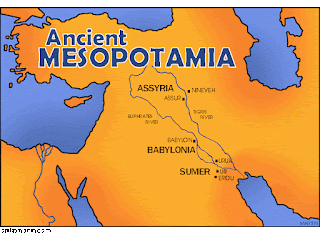
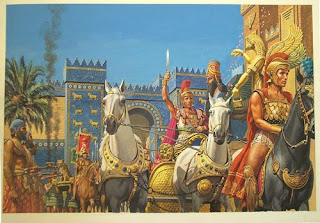
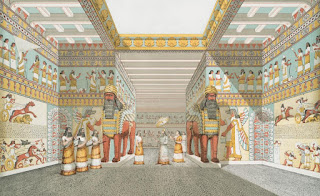
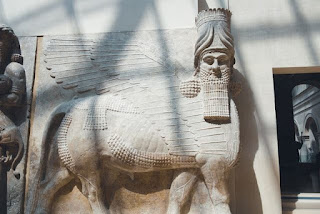
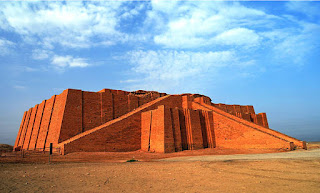
Comments
Post a Comment